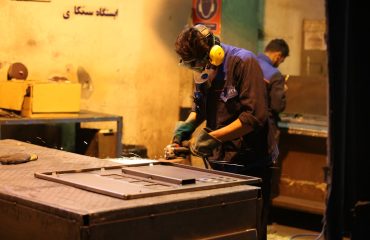body { font-family: sans-serif; line-height: 1.6; }
h1, h2, h3 { color: #333; }
img { max-width: 100%; height: auto; }
Hexagonal steel bars, often overlooked in favor of their round counterparts, offer a unique set of properties and applications. This comprehensive guide will explore the world of hexagonal steel, delving into their characteristics, uses, manufacturing processes, and the advantages they provide over other steel bar shapes.
The Unique Properties of Hexagonal Steel Bars
Hexagonal steel bars possess several key properties that distinguish them from round or square bars. Their six-sided shape provides increased surface area compared to a round bar of the same cross-sectional area. This larger surface area can be advantageous in applications requiring greater grip or frictional resistance. Furthermore, the hexagonal shape offers superior resistance to bending and twisting compared to a square bar of equivalent weight, due to its more efficient distribution of material. The precise angles of the hex also lend themselves to specific joining and assembly techniques. The strength properties are largely determined by the grade of steel used, with common grades including mild steel, medium carbon steel, and high-carbon steel, each offering varying levels of tensile strength, yield strength, and hardness.
Manufacturing Processes: From Ingot to Hexagon
The creation of hexagonal steel bars involves a series of precise manufacturing processes. It typically begins with the melting of steel scrap or raw materials in a furnace to produce an ingot. This ingot is then rolled into a billet, a semi-finished product with a square or rectangular cross-section. The crucial step is the hot rolling process where the billet is passed through a series of progressively smaller hexagonal dies. This process carefully shapes the billet into the desired hexagonal profile while simultaneously reducing its size and increasing its strength. After hot rolling, the bars undergo a cooling process, often followed by straightening and cutting to precise lengths. Quality control measures, including dimensional checks and strength testing, ensure the final product meets stringent specifications.
Diverse Applications Across Industries
The versatility of hexagonal steel bars makes them suitable for a wide range of applications across various industries. In the construction industry, they are frequently used as reinforcement bars in concrete structures, offering superior grip and load-bearing capacity. Their high strength-to-weight ratio makes them ideal for applications where weight minimization is crucial, such as in aerospace and automotive components. They are also commonly used in the manufacturing of handrails, railings, and other architectural elements, providing both strength and an aesthetically pleasing finish. Furthermore, hexagonal steel bars find applications in mechanical engineering, as shafts, axles, and components in machinery, leveraging their superior resistance to torsion.
Advantages of Choosing Hexagonal Steel Over Other Shapes
Compared to round or square steel bars, hexagons offer several distinct advantages. As mentioned, their increased surface area enhances grip and frictional properties, crucial in applications requiring secure fastening or anti-slip features. Their superior resistance to bending and twisting makes them ideal for applications under significant stress. The hexagonal shape also facilitates easier handling and stacking compared to round bars, leading to improved efficiency in storage and transportation. Finally, the unique geometry of hexagonal bars can be aesthetically pleasing, making them a preferred choice in architectural and decorative applications.
Common Misconceptions and Considerations
Despite their numerous advantages, some misconceptions surround hexagonal steel bars. One common misconception is that they are significantly more expensive than round bars. While the manufacturing process might be slightly more complex, the cost difference is often negligible, particularly when considering the enhanced performance and advantages they offer. Another consideration is the selection of the appropriate steel grade based on the specific application requirements. Choosing the wrong grade can compromise the structural integrity and longevity of the project. Finally, careful consideration should be given to the surface finish and any potential need for further treatment, such as galvanization or painting, to protect against corrosion.
Hexagonal steel bars represent a robust and versatile material with a wide range of applications. Understanding their unique properties and manufacturing process is crucial for engineers, designers, and anyone involved in selecting materials for construction, manufacturing, or other industrial projects.
SEO-Friendly Tags:
- Hexagonal steel bars
- Steel bar shapes
- Hexagonal steel properties
- Steel bar applications
- Hexagon steel manufacturing




